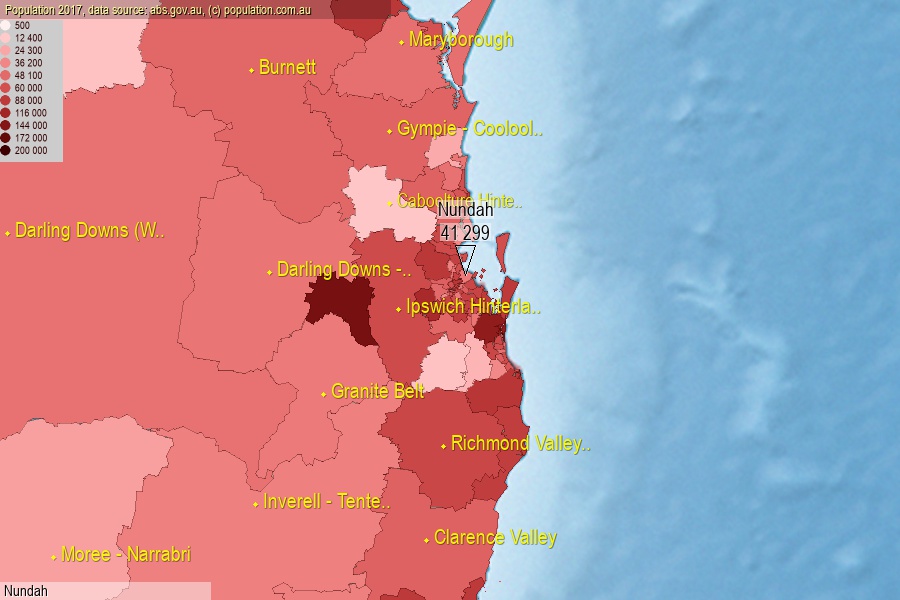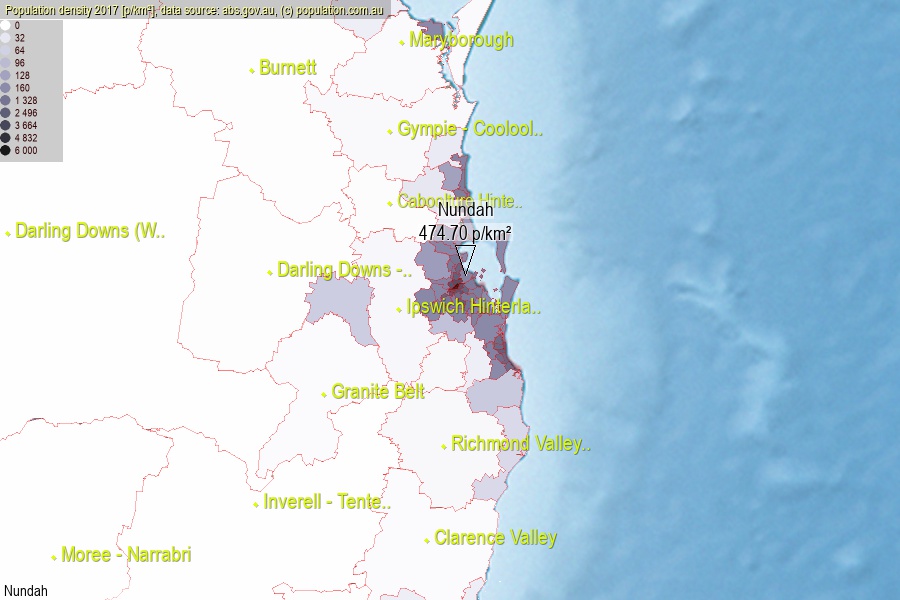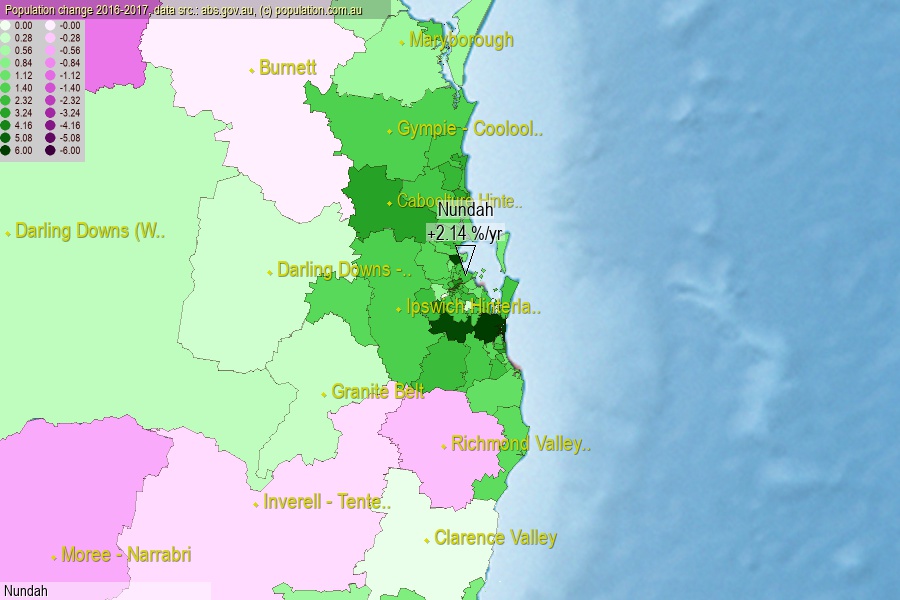 population.com.au
population.com.auLast official estimated population of Nundah (as Statistical Area Level 3) was 41 299 people (on 2017-06-30)[2]. This was 0.17% of total Australian population and 0.828% of QLD population. Area of Nundah is 87.00 km², in this year population density was 474.70 p/km² . If population growth rate would be same as in period 2016-2017 (+2.14%/yr), Nundah population in 2025 would be 48 929. [0]



Click to enlarge. Nundah is located in the center of the images.
Population [people], population density [p./km²] and population change [%/year] [2]
View borders » (new window) [4]
[1991-1992] -0.08 %/Y
[1992-1993] +0.55 %/Y
[1993-1994] -0.37 %/Y
[1994-1995] +0.69 %/Y
[1995-1996] +2.04 %/Y
[1996-1997] +1.61 %/Y
[1997-1998] +0.47 %/Y
[1998-1999] +0.03 %/Y
[1999-2000] +1.26 %/Y
[2000-2001] +1.76 %/Y
[2001-2002] +1.77 %/Y
[2002-2003] +0.46 %/Y
[2003-2004] +0.46 %/Y
[2004-2005] +0.66 %/Y
[2005-2006] +1.51 %/Y
[2006-2007] +2.83 %/Y
[2007-2008] +3.74 %/Y
[2008-2009] +3.45 %/Y
[2009-2010] +2.61 %/Y
[2010-2011] +2.25 %/Y
[2011-2012] +2.42 %/Y
[2012-2013] +2.86 %/Y
[2013-2014] +2.33 %/Y
[2014-2015] +1.91 %/Y
[2015-2016] +2.33 %/Y
[2016-2017] +2.14 %/Y
[0] Calculated with linear interpolation from officially estimated population
[1] Read more about SA3 and Australian Statistical Geography Standard (ASGS) on abs.gov.au
[2] Population data from Australian Bureau of Statistics (Population and density: 2017; change: 2016-2017)
[3] Digital Boundaries: Australian Statistical Geography Standard (ASGS) 2016.
[4] Border coordinates are simplifyed using Ramer-Douglas-Peucker algorithm.